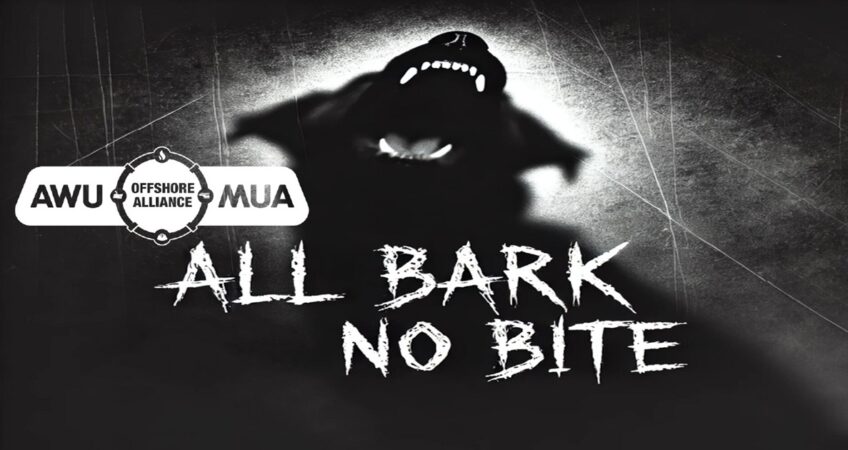In an embarrassing backdown that strikes at the heart of the Offshore Alliances’ ambitions to dominate representation across Australia’s offshore oil and gas industry, the Australian Workers’ Union (AWU) and its joint venture front, the Offshore Alliance, have quietly capitulated in a legal standoff that threatened to unravel their long-claimed coverage of offshore workers.
The dispute, centred on the offshore pipe-laying vessel Castorone operating on Woodside’s Scarborough project, laid bare the fragility of the Alliance’s industrial claims. Faced with a looming showdown in the Federal Court over its constitutional ability to represent certain categories of workers—including welders, electricians and other trades—the AWU folded, issuing a binding undertaking to halt all industrial action aboard the vessel.
The case was brought on by Saipem Australia Pty Ltd, who subcontracted labour hire firm Kuiper Australia to crew the Castorone. The AWU had initiated protected action ballots and moved to notify industrial stoppages on the basis of covering those workers. But Saipem, in a blistering legal letter, challenged the very foundation of that coverage, arguing that the union lacked the constitutional eligibility to represent the majority of Kuiper’s offshore tradespeople.
Facing the potential of a decisive court ruling that could have gutted their ability to operate as the supposed representative of offshore workers, the AWU and Offshore Alliance did what they had previously accused employers of doing—they ran.
On 16 September 2024, the Federal Court of Australia accepted a formal undertaking from the AWU, in which the union agreed not to organise or encourage any industrial action on the Castorone related to the earlier protected action ballot. This included a directive to their own delegates on board to stand down and halt any disruption.
In plain terms, the AWU agreed to silence its own members and publicly disavow the strike action it had orchestrated. Notices were posted to its own website and social media channels instructing members that the union no longer authorised the action—essentially conceding defeat before the court could hand down a potentially devastating ruling.
Why would a union so aggressively defending its coverage suddenly retreat?
Because a loss in court could have done what no employer or rival union has yet been able to achieve: strip the Offshore Alliance of its ability to claim universal jurisdiction over offshore workers. Saipem’s lawyers went straight for the jugular, dissecting AWU’s Rule 5 and arguing that key trades were explicitly excluded from their remit when working on offshore oil and gas pipeline construction. Their reading was supported by clear exclusions in the rule’s wording and logical industry context.
Even with the AWU’s lengthy rebuttals and legal citations to defend their rule interpretations, the fact remains that they refused to let a judge decide. Instead, they offered an undertaking tantamount to surrender—an outcome that allows them to avoid a precedent-setting judgment that would permanently limit their industrial reach offshore.
The union’s internal legal correspondence, written with barely concealed panic, threw everything it could at the wall: historical amalgamations, legal precedent on interpretive latitude, and a threat to seek indemnity costs if the employer proceeded to court. But this was all noise masking the central truth—if the Federal Court had ruled in Saipem’s favour, it would have triggered a domino effect.
Other employers could follow suit. Other industrial actions could be nullified. The very claim that the Offshore Alliance is the union for offshore workers would lie in ruins.
For years, the Offshore Alliance has aggressively marketed itself as the singular voice of offshore workers, asserting exclusive domain across oil and gas rigs, FPSOs, and marine construction vessels, and now on shore construction at Pluto 2. But this episode exposes that claim as deeply vulnerable. The Alliance is not a registered organisation but a branding collaboration between the AWU and the MUA (Maritime Union of Australia). And while the MUA’s offshore jurisdiction is settled, the AWU’s is riddled with ambiguities, exceptions, and historical baggage.
The AWU’s retreat from court signals that they knew they were skating on thin constitutional ice. The possibility of a black-letter ruling stripping their coverage—and thereby undermining the very legitimacy of their alliance with the MUA—was too dangerous to allow.
This episode sends a stark message to the thousands of offshore workers currently covered by or considering joining the Offshore Alliance. Despite its confident rhetoric, the Alliance’s legal foundation is not bulletproof. In fact, it may be paper-thin in some classifications.
What’s worse, instead of standing up for its members in court, the AWU caved. Offshore workers expecting solidarity were instead handed a court-issued gag order, with their union telling them to stand down after rallying them to act.
The Offshore Alliance can spin this all it likes, but the facts are plain: a legal threat exposed their vulnerability, and rather than face judgment, they flinched. The emperor of offshore coverage may have no clothes—and this time, the court was about to prove it.
Despite the chest-thumping, fiery rhetoric, and the usual barrage of Facebook posts, the Australian Workers’ Union and its alter ego, the Offshore Alliance, have once again shown they are much louder in theory than in practice.
But don’t worry, the Offshore Alliance has made it clear they’ve brought in the big legal guns and will fight this very soon—perhaps sometime maybe. Convenient.
To date there has been no challenge filed in the Federal Court of Australia.
In the end, this “battle” has been less David vs Goliath and more Scooby-Doo chase scene—lots of noise, doors opening and slamming shut, and no actual consequences.
But hey, at least the Facebook post was passionate.


